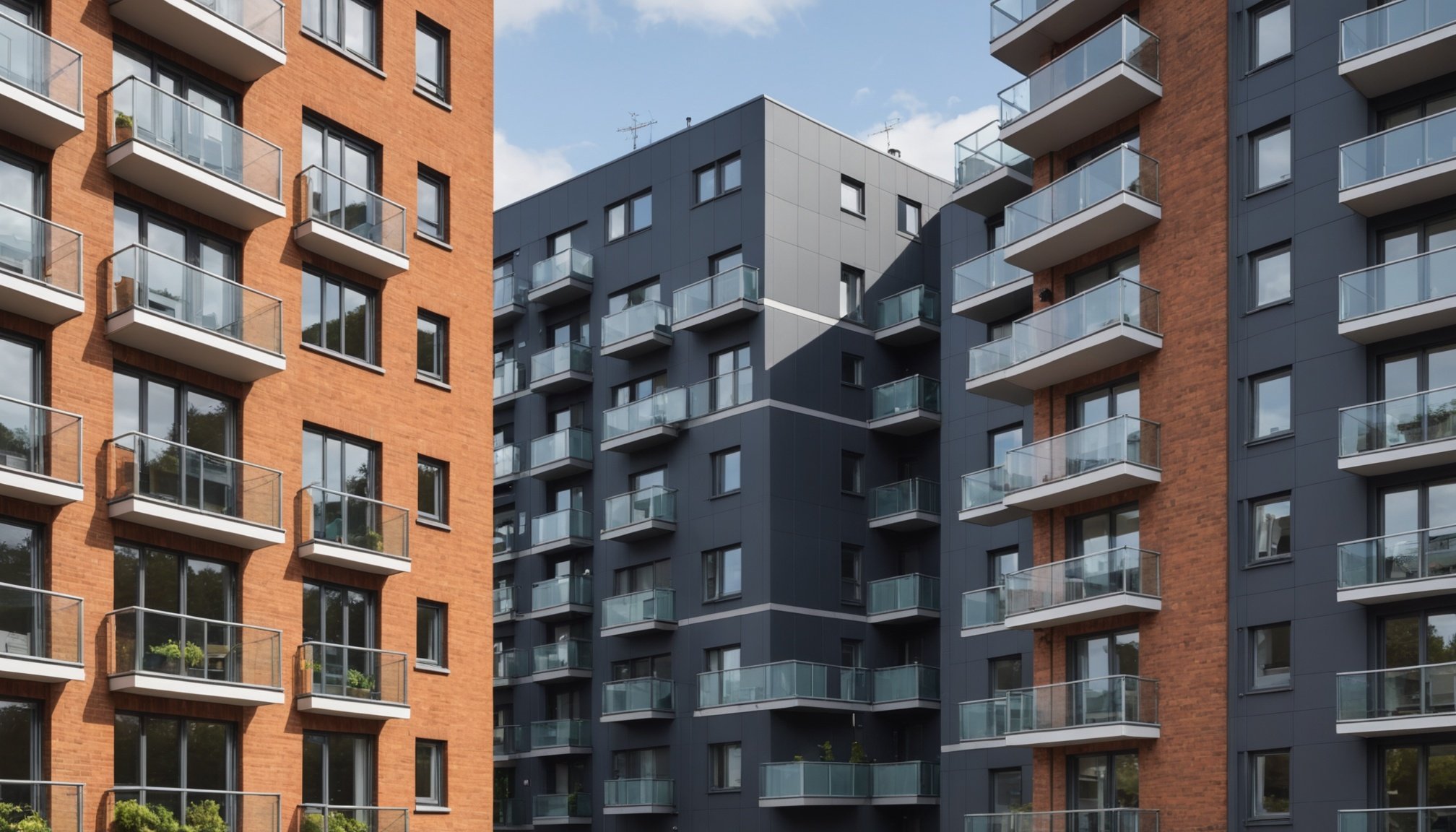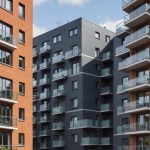Understanding the Effects of the UK’s New Cladding Legislation on High-Rise Flat Sales
The UK’s cladding crisis, exacerbated by the tragic Grenfell Tower fire in 2017, has led to a significant overhaul of building safety regulations. The new cladding legislation, particularly the Building Safety Act 2022 and its subsequent amendments, has far-reaching implications for high-rise flat sales. Here’s a detailed look at how these changes are impacting the property market.
The Building Safety Act 2022: A New Era in Building Safety
The Building Safety Act 2022 is a landmark legislation aimed at enhancing building safety, particularly in high-rise residential buildings. This act introduces several key measures to protect leaseholders from the financial burden of cladding remediation and to ensure that buildings are safe from fire risks associated with cladding.
Sujet a lire : Essential Factors to Weigh When Investing in Buy-to-Let Properties in University Cities such as Oxford
Key Provisions of the Act
- Protection for Leaseholders: The act protects qualifying leaseholders from the costs of removing and replacing unsafe cladding systems. This is a significant relief for many homeowners who were previously facing substantial financial burdens[2][4].
- Extended Limitation Period: The act extends the limitation period for claims related to defective building work from 6 years to 15 years for claims that accrue after the act took effect, and up to 30 years retrospectively for claims that accrued before the act took effect. This gives homeowners more time to seek compensation for defective work[1][4].
- New Homes Warranty: Developers of new build homes are required to provide buyers with a new homes warranty lasting for 15 years, although this requirement is not yet in force[1].
Impact on High-Rise Flat Sales
The protection offered to leaseholders under the Building Safety Act has a dual effect on high-rise flat sales. On one hand, it reassures potential buyers that they will not be saddled with unexpected and costly remediation works. On the other hand, the ongoing remediation process and the uncertainty surrounding the completion dates can deter some buyers.
Funding Schemes: Cladding Safety Scheme and Building Safety Fund
To facilitate the remediation of unsafe cladding, the UK government has introduced two primary funding schemes: the Cladding Safety Scheme (CSS) and the Building Safety Fund (BSF).
A lire aussi : Strategic Portfolio Diversification: Essential Tips for UK Property Investors to Mitigate Risk
Cladding Safety Scheme (CSS)
- Eligibility: The CSS is open to residential buildings over 11 metres and up to 18 metres in height in London. It covers buildings where the applicant is unable to afford the remediation works or feels it is not their responsibility[2].
- Funding: The CSS covers the reasonable capital costs for works directly related to the replacement of unsafe cladding, including access, removal and disposal of existing cladding, replacement materials, labour, and professional fees[1][2].
- Application Process: Applications are made through the Building Remediation Hub, managed by Homes England. Applicants must provide detailed plans and full costs for the project, which are then approved by the Department for Levelling Up, Housing and Communities (DLUHC)[2].
Building Safety Fund (BSF)
- Eligibility: The BSF is primarily for buildings over 18 metres in height in the Greater London Area. However, some buildings have been transferred from the BSF to the CSS based on specific criteria[1][2].
- Funding: Similar to the CSS, the BSF covers the costs associated with replacing unsafe cladding systems, including access, removal, replacement materials, labour, and professional fees[1].
Timetable and Progress of Remediation Works
The remediation of unsafe cladding is a complex and time-consuming process. Here are some key points regarding the timetable and progress:
Current Status
- As of the end of August 2024, there are 4,771 residential buildings over 11 metres in height identified with unsafe cladding. Remediation has been completed on 1,392 of these buildings[1][3].
- The Ministry of Housing, Communities and Local Government (MHCLG) estimates that the full remediation process may take until 2035 to complete, with a total estimated cost of £16.6 billion[3].
Challenges and Delays
- Identification of Buildings: Up to 60% of buildings with dangerous cladding have not yet been identified. Incomplete building records and difficulties in tracing owners are significant challenges[3].
- Voluntary Engagement: Engagement with government grant programs is voluntary, and some building owners may be reluctant to engage for fear of uncovering problems out of scope for government funding[3].
Financial and Emotional Impact on Residents
The cladding crisis has had a profound financial and emotional impact on residents.
Financial Distress
- Increased Insurance Premiums: The cladding crisis has led to a sharp rise in insurance premiums for both homeowners and construction professionals[1].
- Costs and Funding: While most leaseholders are now protected from remediation costs, the overall financial burden on taxpayers and developers is significant. The government is expected to provide £9.1 billion of the estimated £16.6 billion needed for remediation[3].
Emotional Distress
- Uncertainty and Anxiety: Residents are suffering significant emotional distress due to the uncertainty surrounding the remediation timeline and the safety of their homes. The lack of a published target date for completion exacerbates this anxiety[3].
Practical Insights and Actionable Advice for Homebuyers
For those considering purchasing a high-rise flat, here are some practical insights and actionable advice:
Due Diligence
- Check Building Status: Before purchasing, ensure you check the building’s status regarding cladding remediation. Use resources like the Remediation Portfolio Dashboard to get the latest information[1][3].
- Understand Funding Schemes: Familiarize yourself with the CSS and BSF to understand if the building is eligible for funding and what costs are covered[1][2].
Legal and Financial Implications
- Leaseholder Protections: Understand the protections offered under the Building Safety Act and how they apply to your situation. This includes the extended limitation period and the new homes warranty[1][4].
- Service Charges: Be aware that while cladding remediation costs are covered, other non-cladding defects may still be passed on to leaseholders via service charges[4].
Table: Comparison of Cladding Safety Scheme and Building Safety Fund
| Criteria | Cladding Safety Scheme (CSS) | Building Safety Fund (BSF) |
|---|---|---|
| Eligible Height | Over 11 metres and up to 18 metres in London | Over 18 metres in the Greater London Area |
| Application Process | Through the Building Remediation Hub | Through the Building Remediation Hub |
| Funding Coverage | Access, removal, replacement materials, labour, professional fees | Access, removal, replacement materials, labour, professional fees |
| Building Ownership | Buildings where applicants cannot afford or feel responsible for remediation | Primarily for buildings over 18 metres in the Greater London Area |
| Transfer of Buildings | Some buildings transferred from BSF to CSS based on specific criteria | Some buildings transferred to CSS |
Quotes and Perspectives
- “The cladding crisis has had a devastating impact on residents, causing significant financial and emotional distress. The government needs to publish a target date for ending cladding remediation to provide transparency and reassurance,” – National Audit Office report[3].
- “The Building Safety Act is a crucial step towards ensuring that residents are safe from fire risks associated with cladding. However, the slow pace of remediation and the lack of a clear timeline are major concerns,” – Industry expert.
The UK’s new cladding legislation is a comprehensive response to the cladding crisis, aiming to enhance building safety and protect leaseholders from financial burdens. However, the process is complex, and the timeline for completion is long. For homebuyers, it is essential to conduct thorough due diligence and understand the legal and financial implications of purchasing a high-rise flat. As the situation evolves, transparency and clear communication from the government will be crucial in alleviating the uncertainty and distress faced by residents.
In the words of a resident affected by the cladding crisis, “Knowing that our building is safe and that we won’t be hit with unexpected costs is a huge relief. But we need a clear timeline and more transparency to plan our lives with confidence.” This sentiment reflects the broader need for clarity and action in addressing the cladding crisis.











